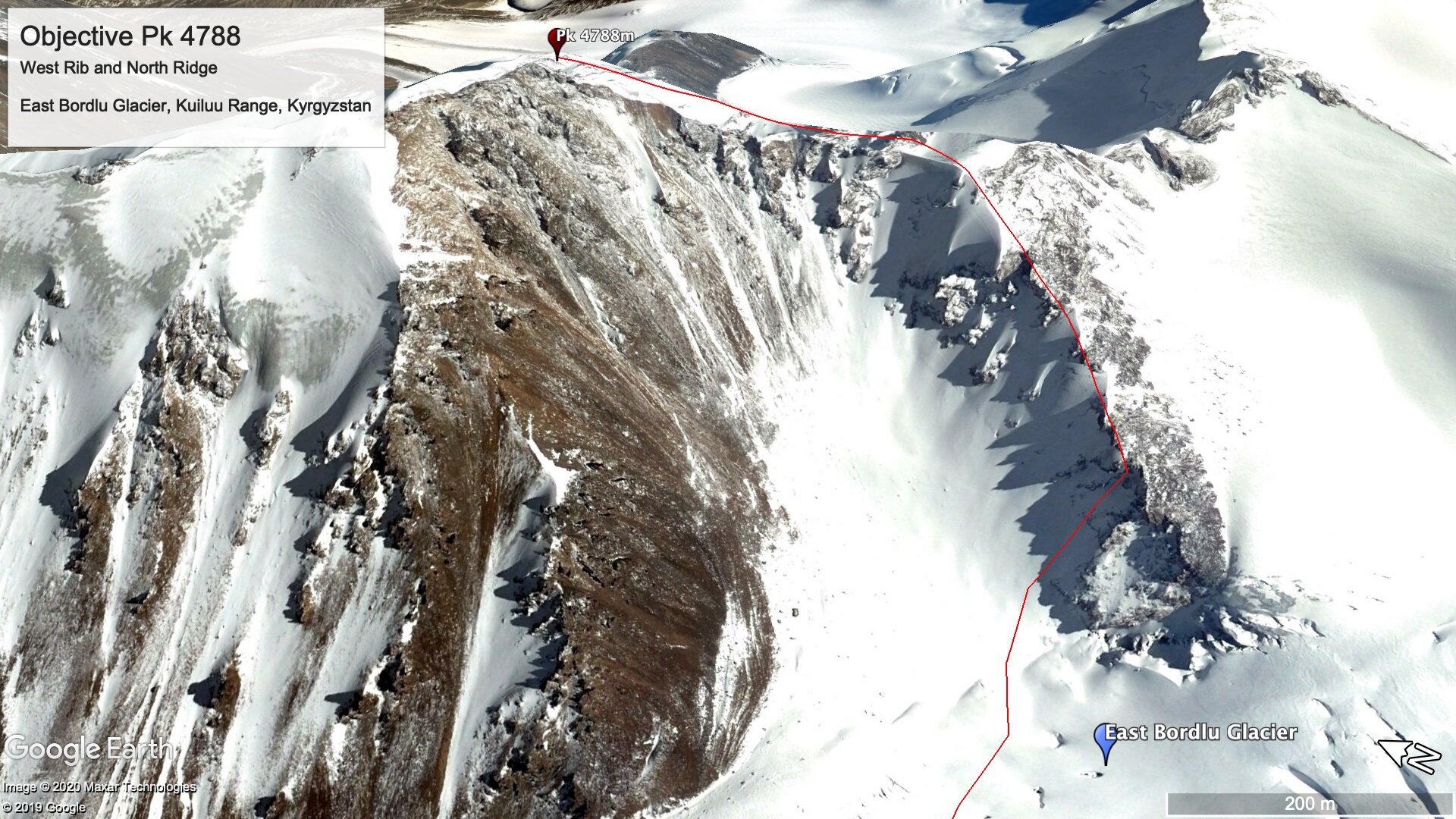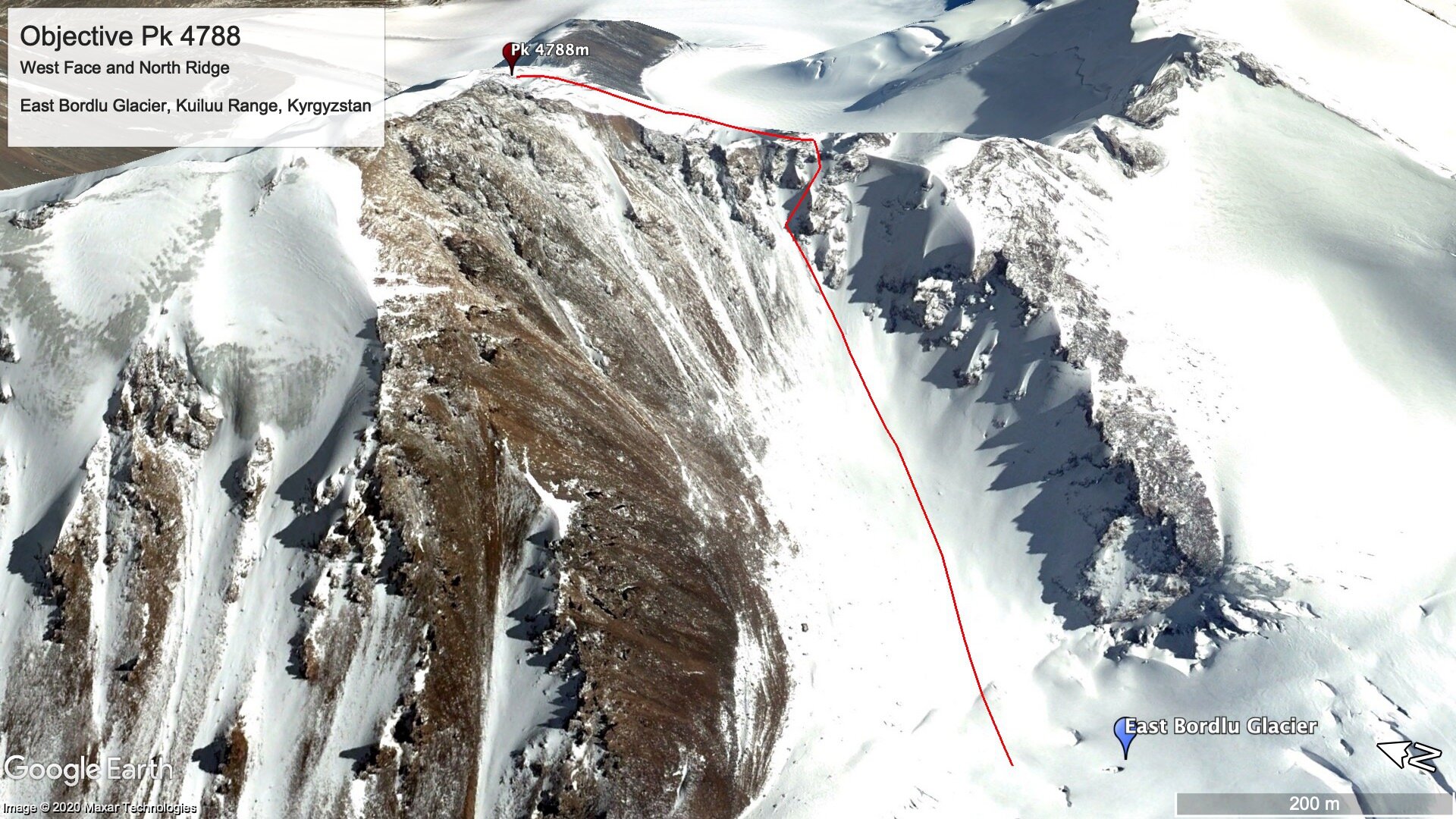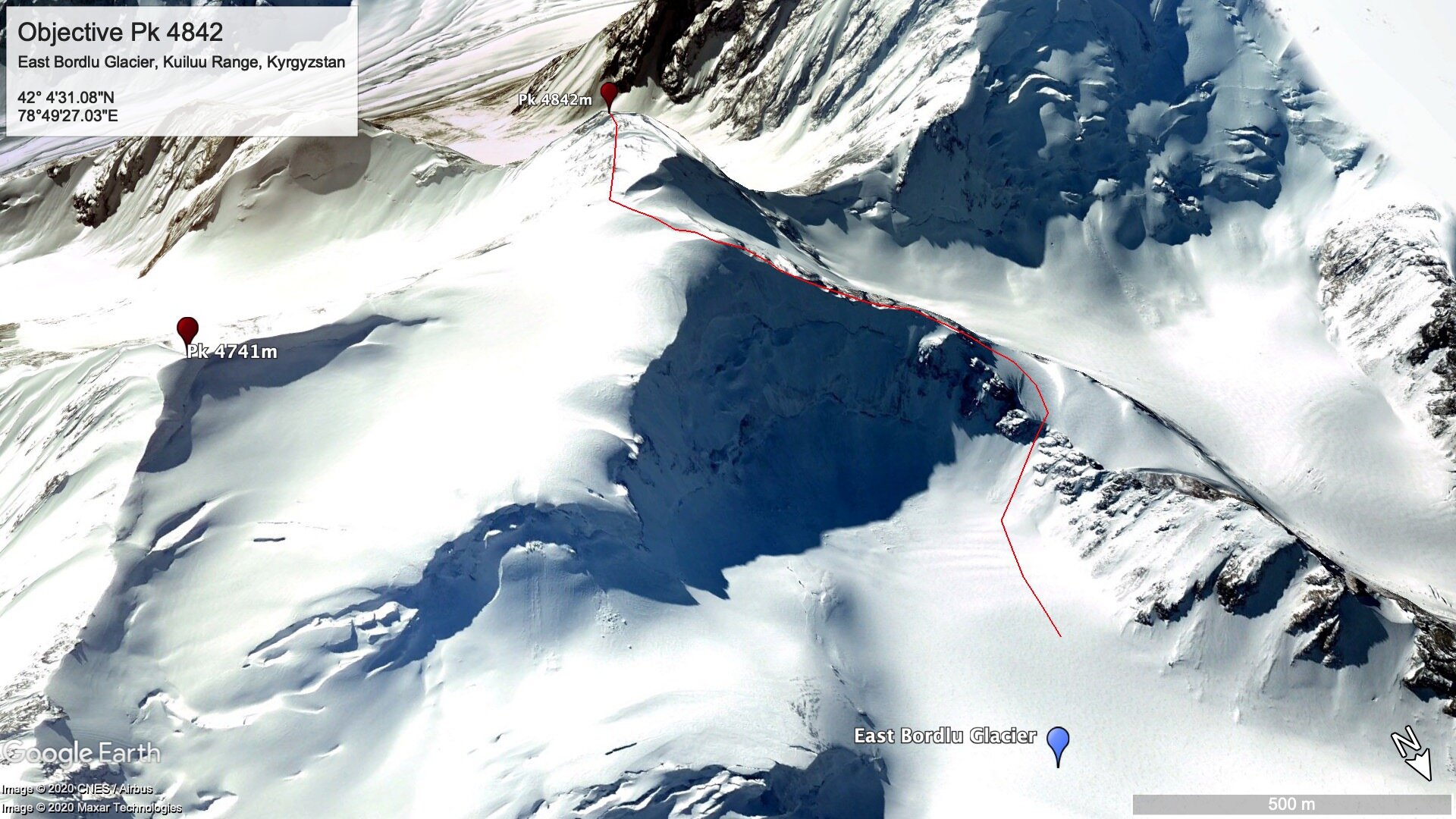Kyrgyzstan was always one of those countries on the periphery of my imagination. A land inhabited by fierce horsemen and towering snowy peaks. When several friends recently returned from climbing there telling tales of a land ripe for exploration I knew I had to go, my interest was piqued.
It was a rather serendipitous moment then when a small advertisement appeared in the Alpine Club newsletter asking for volunteers '‘to mount a small, but challenging expedition to explore several 4000m+ peaks in the Kuiluu Range of the Tian Shan mountains close to the Chinese border.’’ I signed up on the spot. I’d figure out the rest later.
Fast forward a few months and something called COVID was rampaging across the globe. Planes were grounded, people under home arrest and for once the world was a little quieter. Although expected, it was with a heavy heart when I took the call from Tom to hear our expedition to Kyrgyzstan had been postponed. I put my guidebook back on the shelf and contented myself to spend what short window allowed to concentrate on my trad climbing that summer in the Peak District.
One year later and we’re back on track. Planning is in full swing for Kyrgyzstan 2021. Although the British government has banned all international travel until June, the outlook for the trip looks hopeful as the UK vaccine program continues to gain momentum. Full steam ahead.
A Little About Kyrgyzstan
Mountains cover 95% of the territory of Kyrgyzstan and 40% of those are above 3,000 meters high. Although geographically isolated by its highly mountainous terrain and the country furthest from the ocean, Kyrgyzstan has been at the crossroads of several great civilizations, most notably as part of the Silk Road.
Kyrgyzstan attracts its fair share of climbers with many attempting the famed Lenin Peak at 7,134m. One of the most accessible 7000m peaks in the world. It’s highest though, is the Jengish Chokusu standing at 7,439 metres and the highest in the Tian Shan range.
The mountainous region of the Tian Shan, where the team will be based, covers over 80% of the country. Kyrgyzstan is occasionally referred to as "the Switzerland of Central Asia,” though not for its organisation and efficiency.
There are seven well known and explored mountainous regions in Kyrgyzstan. Four of them are located in Tien-Shan and three in Pamir. Many of the high vertical walls or mountains of 5,000 meters and over have been well-explored and little remains for first ascents in these areas. There are however, thousands of accessible summits over 4000m still due for first ascents. This is where we come in.
The Objectives
The expedition will visit the Kuiluu Range (shown in red) of the Tian Shan, Kyrgyzstan.
This expedition has a strong exploratory element and will visit an area of a remote mountain range with no records available to suggest previous exploration. Checks with the Kyrgyzstan Alpine Club have confirmed this. It is a small expedition of 8 members, planning first ascents and new routes in the Kuiluu Range of the Tian Shan mountains.
For several of the expedition members, including me, this will be their first mountaineering expedition. The expedition will endeavour to climb using good ethics, in an Alpine style, and with a minimal impact to the natural environment. No power drilling equipment will be taken on the expedition.
Site of planned base camp with surrounding objectives all unclimbed peaks the team hope to make first ascents of.
The area has been well researched by obtaining numerous reports from previous expeditions, consultation with ITMC, and use of Google Earth and available Soviet-era mapping. We’ve identified seven potential peaks (above) for first ascents with the climbing graded from PD - AD+. The majority of these routes from investigation appear to be snow/ice with some rock involved.
This expedition does not aim to visit the potentially unstable Kyrgyz-Tajik border area, which is currently experiencing minor skirmishing.




“Try to avoid unfamiliar people and, especially beware of single beautiful girls. Appearances can be deceptive and as a rule, they are not very skilful. Who knows what follies they might reveal somewhere in the 4th camp at 6,400m.”
The Team
Expedition Leader
Tom Davis-Merry
Team
Alan Henderson
Wayne Auton
Alex Metcalfe
Tom Simpson
Sam Davis
Support & Funding
We’ve received funding from the Mountain Everest Foundation (MEF) and the Montane Alpine Club Climbing Fund (MACCF) and have the support of the Alpine Club and British Mountaineering Council (BMC). We are awaiting further confirmation from the Austrian Alpine Club if our grant request has been approved. We will be supported by in-country tour operator ITMC.
We are being kindly supported by Montane, Fatmap and Expedition Foods.
Although the team has received some funding, the majority of costs are being covered by ourselves. Any brands and organisations looking to contribute or work with us can contact me here for further information
Reports & Coverage
A full expedition report will be published on the Alpine Club website & in their quarterly newsletter. Articles will also be featured with the BMC, Montane, and UK Austrian Alpine Club AAC(UK) websites.
An article will be submitted for publication in the 2021 Alpine Journal.
Images will be shared by the team via Instagram and Facebook and then re-shared via the Alpine Club.
I plan to shoot and write several articles with a view to submissions for UK climbing publications.
I am also planning to shoot a short documentary of the trip.
Management of Waste
The expedition will adopt a policy of ‘take nothing and leave nothing behind’. All human waste will be burnt and buried, and all other waste will be carried out. The siting of any latrines will seek to ensure that any water sources are not contaminated. The expedition will ensure that any disturbance to natural flora and fauna is kept to an absolute minimum. Particular care will be taken to avoid any disturbance to Alpine plant life, nesting fauna, or wildlife with young.


